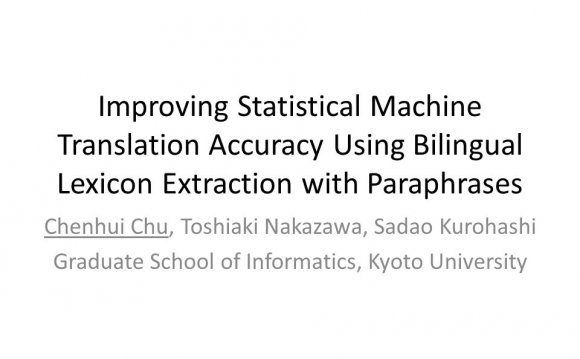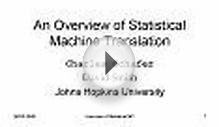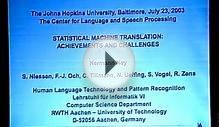
The first ideas of statistical machine translation were introduced by Warren Weaver in 1949, including the ideas of applying Claude Shannon's information theory. Statistical machine translation was re-introduced in the late 1980s and early 1990s by researchers at IBM's Thomas J. Watson Research Center and has contributed to the significant resurgence in interest in machine translation in recent years. Nowadays it is by far the most widely studied machine translation method.
The idea behind statistical machine translation comes from information theory. A document is translated according to the probability distribution that a string in the target language (for example, English) is the translation of a string in the source language (for example, French).
The problem of modeling the probability distribution has been approached in a number of ways. One approach which lends itself well to computer implementation is to apply Bayes Theorem, that is , where the translation model is the probability that the source string is the translation of the target string, and the language model is the probability of seeing that target language string. This decomposition is attractive as it splits the problem into two subproblems. Finding the best translation is done by picking up the one that gives the highest probability:
.For a rigorous implementation of this one would have to perform an exhaustive search by going through all strings in the native language. Performing the search efficiently is the work of a machine translation decoder that uses the foreign string, heuristics and other methods to limit the search space and at the same time keeping acceptable quality. This trade-off between quality and time usage can also be found in speech recognition.
As the translation systems are not able to store all native strings and their translations, a document is typically translated sentence by sentence, but even this is not enough. Language models are typically approximated by smoothed -gram models, and similar approaches have been applied to translation models, but there is additional complexity due to different sentence lengths and word orders in the languages.
The statistical translation models were initially word based (Models 1-5 from IBM Hidden Markov model from Stephan Vogel and Model 6 from Franz-Joseph Och), but significant advances were made with the introduction of phrase based models. Recent work has incorporated syntax or quasi-syntactic structures.
Benefits[edit]
The most frequently cited benefits of statistical machine translation over rule-based approach are:
MORE TRANSLATION VIDEO












